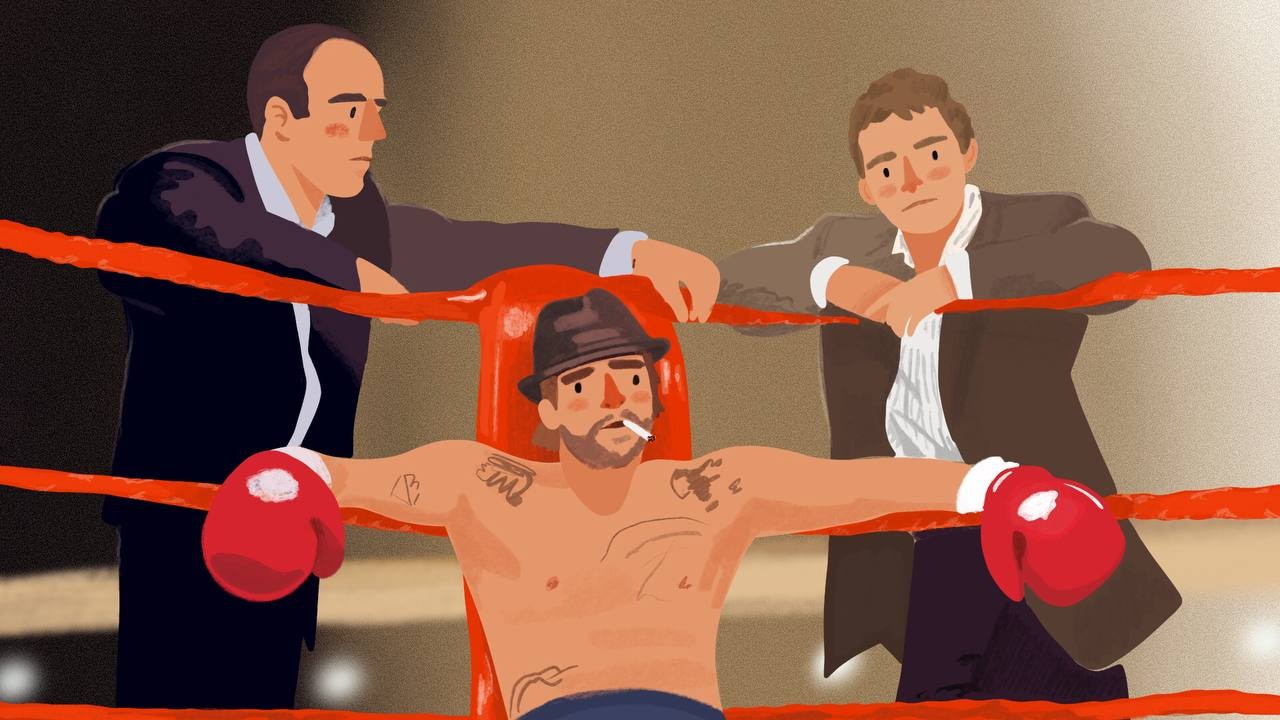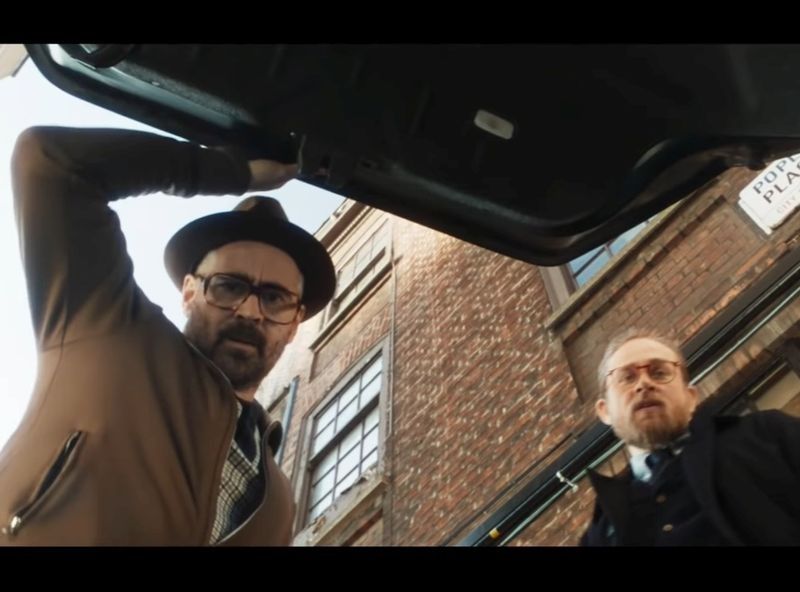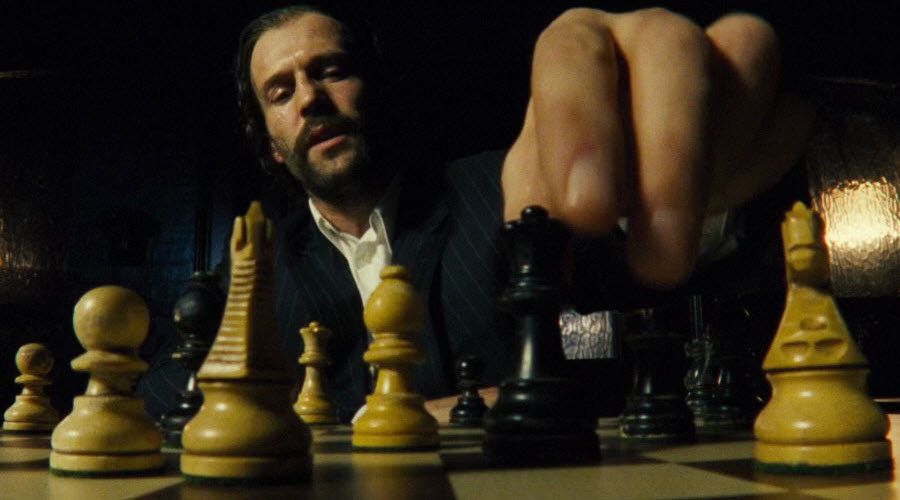The gentleman with a rocker's heart: Guy Ritchie
This director's style is instantly recognizable. He's commonly referred to as the British Tarantino and his crime stories are funnier than any comedy. Let's break down what's remarkable about his style and why he's just a rocker roller.


This director's style is instantly recognisable. He's commonly referred to as the British Tarantino and his crime stories are funnier than any comedy. His films are already iconic and have become memes and quotes. Probably, after the "British" Tarantino, you have already understood that today we are going to talk about Guy Ritchie. Let's break down what's remarkable about his style and why he's just a rockerroller.
Art by @nadi_bulochka
So why Guy Ritchie is part of the cultural code?
It's impossible not to mention here that Guy Ritchie, like many of his colleagues - David Fincher, Michel Gondry, Michael Bay - started his journey into the industry with film-making and advertising. He has certainly excelled in this field, having directed several videos for Madonna as well as a major commercial for BMW in a short film. However, a look at Madonna's ad for BMW M5 shot by Guy Ritchie reveals many of his signature directorial cues - head-banging clip editing, daring shots and angles, slowing down and speeding up the image as well as his trademark visual humor.
The late 90s and early 00s was a period when cinema was experiencing a new breath, with Tarantino, Fincher, Smith, Rodriguez and many others, including of course Guy Ritchie. You could call it a new breath because young and ambitious directors were not afraid to speak out through their cinema: their language was rebellious and clearly spoke with a pop culture accent, just in the form of film references for some, comic book references for others, and music for others. So Guy Ritchie was one of those who brought the spirit of the MTV generation to the cinema screens with all the tricks in the form of ripping and fast-paced editing. With these tools, Ritchie could be said to have shaken up an entire genre of crime cinema. Of course, this statement may seem too loud, especially against the background of such masters of gangster cinema as Martin Scorsese, Brian De Palma and Francis Ford Coppola, but one cannot deny the fact that it was Ritchie's inimitable style that wrote him into the history of cinema.
Clip editing
As we have already established, when Guy Ritchie came to film Guy Ritchie turned to techniques and tricks understandable to the MTV generation. The numerous techniques used by Ritchie can be grouped into one category called "clip editing". However, if you look at his work objectively, the term decomposes into many: rough, jagged editing, stills, accelerated and slowed down shots, various kinds of zooming, multiple exposures... Looking at all these components, it becomes clear how much of a montage Guy Ritchie is - at least he was so at the beginning of his career. Ritchie's images are overloaded with effects, and the shots shift so violently at times that it's hard to call it order.
However littered you might think Guy Ritchie's picture is, there's no denying that it's pure style. Ritchie's true uniqueness lies in the fact that his early films are solidly counter-cultural, where every element is deliberately done wrong. Consider the first and one of the most important films of Ritchie's career "Lock, Stock and Two Smoking Barrels". Firstly, what makes Guy Ritchie's style unique is the importance he attaches to the locations of his films: London, or rather its suburbs, backwater bars and clubs. Secondly, Ritchie's characters are outright losers: a street-jobber, an almost beggarly poker player, etc. Paradoxically, Ritchie shoves them all into crime plots, where they and their ideas look even more absurd and ridiculous. And this is where his humour is born. Ritchie both mocks the underdogs and sides with them, you know, because they're his main characters. As a counterbalance to the underdogs, Ritchie contrasts the stereotypical crime bosses who only want money and are bad because they're just bad. This formula was a staple of the director's first films "Lock, Stock and Two Smoking Barrels" and "Snatch".
However, all of the above is not to say that his filmmaking is all counterculture. If you go back to the video from "Lock, Stock and Two Smoking Barrels" that we have attached above, you will find that all the techniques are used to the point. This montage perfectly captures the excitement of the game of poker. Guy Ritchie is not a spontaneous director, he can only appear to be.
Clip editing was as quickly bored as it became fashionable. So in time, Guy Ritchie abandoned such "vertigo" editing. Already in the "Revolver" you can only see echoes of this style. We don't think this is a disadvantage, on the contrary, Ritchie has spent his career growing as a director, and this has been reflected in the fact that his techniques have become more relaxed.
But Guy Ritchie wouldn't be himself if he didn't even break his own rules. So we can still enjoy his old style in the brilliantly choreographed brawls from "Sherlock Holmes".
Amongst other things, Guy Ritchie also resorts to the use of parallel editing and poly-screening. The first method helps to build semantic associations: when two different shots are edited together, a whole new meaning is born. A perfect example of Ritchie's parallel editing can be seen in the "Snatch".
Ritchie uses the second technique, polyscreen, to fit fragments of different events from time and space onto a single screen.
Cinematography in Guy Ritchie's films
However, if you watch the video, you'll see that Ritchie is still faithful to his old editing method at moments. The interesting thing here is that his editing is less about effects and more about camera dynamics. Therefore Ritchie shoots using the Dutch angle, sharp angles from above and below, subjective perspective (shots from the lua franca of one of the characters or from the face of the subject), and lots of close-ups. If you pay attention, Ritchie has become more montage-like in his later films. For example, in "The Man from U.N.C.L.E." he often uses classic montage transitions: editing on the motion, editing plans by all laws: detailed planes interspersed with close-ups and more medium.
In general, the camerawork in Guy Ritchie's films creates dynamic spaces. This can be either with the camera tilted to the side or the use of wide-angle optics. Either way, they create interesting, dynamic, shots. For example, the wide-angle optics deforms the geometry of the frame, stretching out the lines, which creates this effect.
Storytelling
I realise that everything we've dealt with before is also storytelling in one way or another, but we'd like to focus here on Guy Ritchie's scripted tropes. First and most importantly, his films are often linear, but have multiple subplots that only add up to a clear picture in the finale. For example,"Lock, Stock and Two Smoking Barrels", "Revolver" and "Snatch" have so many flashbacks and flash-forwards that the final of the film is not clear until the very end - we are left to guess. Twisting and jumbling multiple storylines is as much a hallmark of Guy Ritchie's directorial style as it is clip editing. For all these non-linear techniques, Ritchie's films are remarkably straightforward: they go from point A to point B, merely diluting the stories with lightning-fast flash-forwards and flashbacks along the way.
In addition, his films are not without voice-over narration. It's a technique that's already hard to imagine the crime drama genre without, so he makes extensive use of it in many of his films. This method has a special function in Ritchie's films - to guide the viewer through confusing plots and events. A great example of this is again seen in "Sherlock Holmes: A Game of Shadows".
However, it would be unfair not to note that in the early films Guy Ritchie himself wrote the scripts for his films and therefore the dialogues in them are short and succinct. Characters speak only on the point and do not shy away from slang and profanity. Ritchie attached great importance to this style of dialogues because they sound particularly colourful.



Music
I think the music is exactly what should speak for itself. Guy Ritchie came out of clip-making, so you have to understand that the music in his films is never incidental, even though it often directly tells what's on screen. Each film is packed with 10 to 20 very diverse tracks, some of which have become iconic, like "I wanna be your dog" by The Stooges or "Spooky" by Dusty Springfield.
Again, let the music speak for itself.
Now you can go watch his movies
In conclusion, run along and see a Guy Ritchie movie if you haven't seen any of his films yet. It will definitely lift your spirits and entice you with its intriguing tricks and techniques. Plus, it's just a cool movie from an already iconic director. Ritchie is a very montage-oriented director and he focuses on post-production in many of his projects, which is reflected in his signature style.
We love movies here. We're talking about cinema here. Here we promote the love of art and try to inspire you to take your camera and make a short film. Leave the boring pre-production routine to the Filmustage - automatic script breakdown - and focus on your creativity!
After a long time of hard work we are happy to announce the beta-testing of the new scheduling feature in the Filmustage software. Be one of the first to test the new functionality - click here for more detailed information.
Take care of yourself and see ya next week!
From Breakdown to Budget in Clicks
Save time, cut costs, and let Filmustage’s AI handle the heavy lifting — all in a single day.